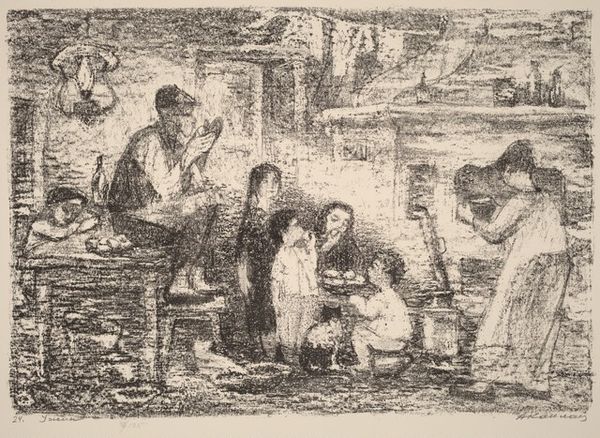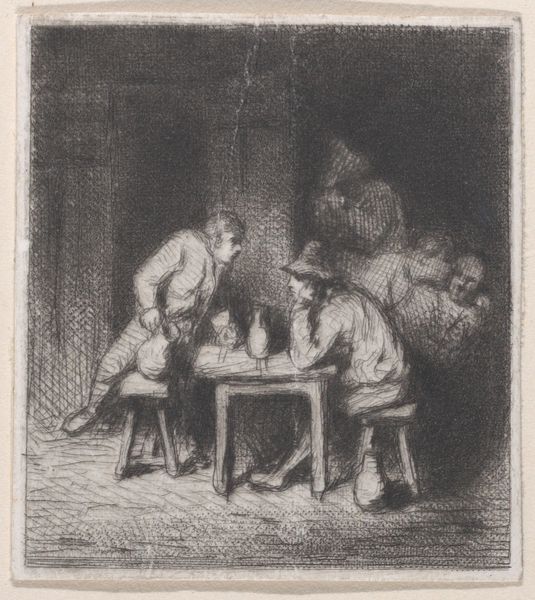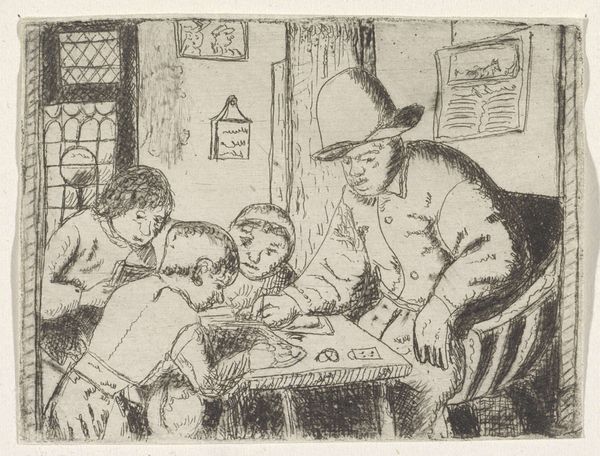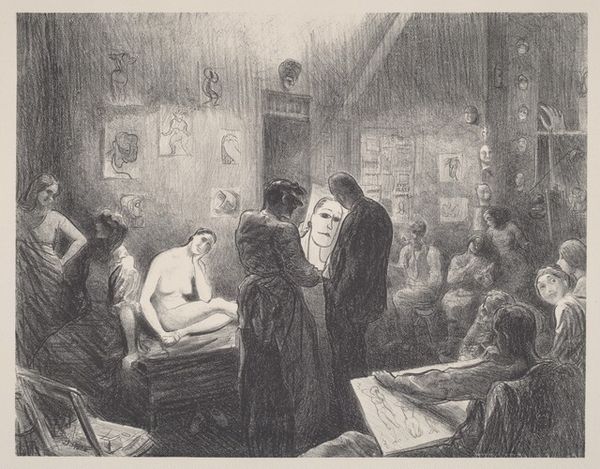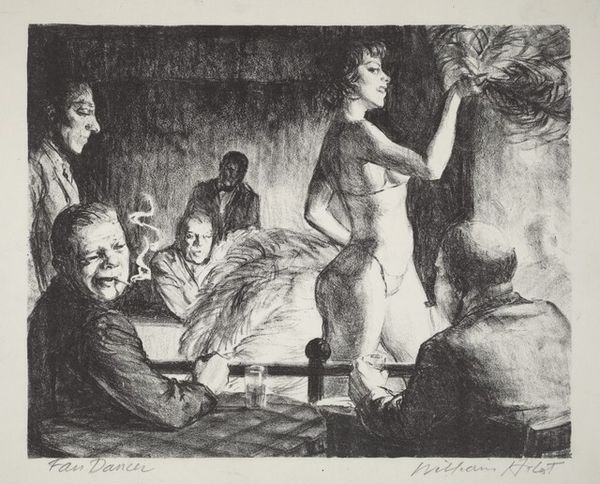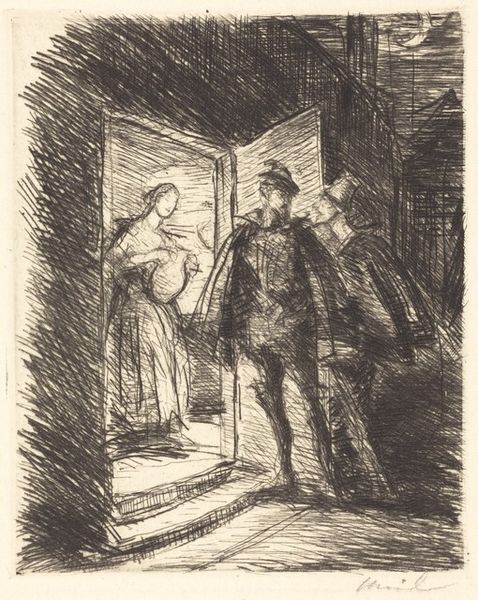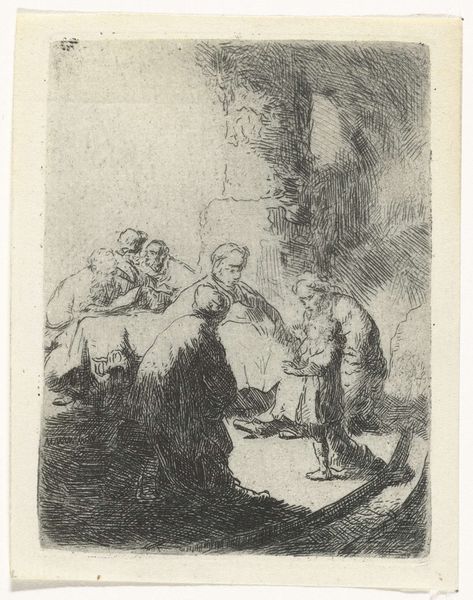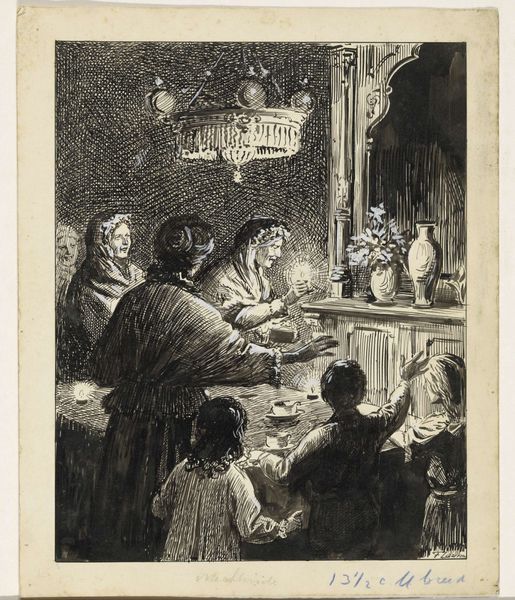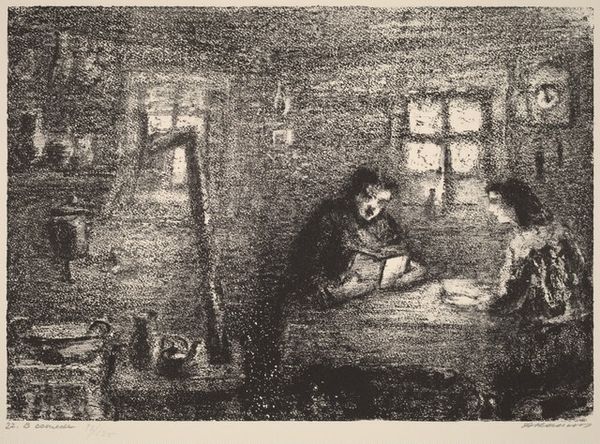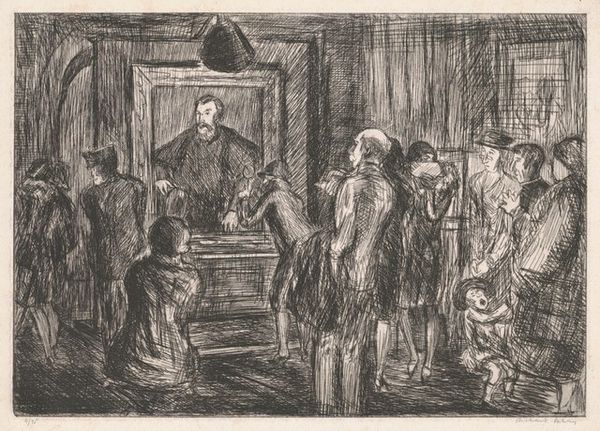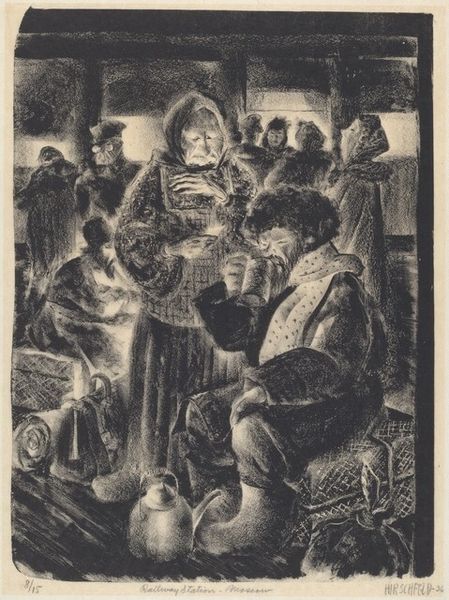
drawing, pencil
#
portrait
#
pencil drawn
#
drawing
#
impressionism
#
pencil sketch
#
figuration
#
pencil drawing
#
group-portraits
#
pencil
#
genre-painting
Copyright: Public domain
Editor: This is Van Gogh's 1885 pencil drawing, "Five Persons at a Meal," currently housed at the Van Gogh Museum. It's a scene of people eating together, but there's a starkness to it, an almost unsettling silence. How do you interpret this work, especially considering the context of his time? Curator: The drawing offers a powerful glimpse into the socio-economic realities of rural life in 19th-century Netherlands. Beyond a simple genre painting, it brings into focus themes of labor, poverty, and familial bonds within the constraints of peasant existence. How do you think the use of pencil drawing as opposed to painting shapes our perception of these figures? Editor: I hadn't considered the medium so explicitly. Maybe the sketchiness lends itself to a rawer depiction, less idealized than if it were a finished painting? Curator: Exactly! And the lack of color reinforces the somber mood, emphasizing the hardships etched onto their faces and hands. Consider the significance of representing laborers sharing a meal. Is it merely about sustenance, or does it convey something deeper about their shared struggle and solidarity? Editor: It feels like more than just sustenance. There’s something profound about the shared experience, a silent understanding perhaps. But do you think this depiction avoids romanticizing peasant life? Curator: That's a crucial question. Van Gogh’s own social consciousness sought to portray them without embellishment, though critique arose questioning whether his view was fully detached from a middle-class perspective observing the "other". Considering later works, how much do you believe identity and empathy influenced his portrayals? Editor: That's something to consider... It shows me the importance of deeply researching not only the art itself but also the social environment that birthed it and continues to shape its interpretation. Curator: Precisely! And recognizing the power of art to reflect, challenge, and shape perceptions of the world.
Comments
No comments
Be the first to comment and join the conversation on the ultimate creative platform.
